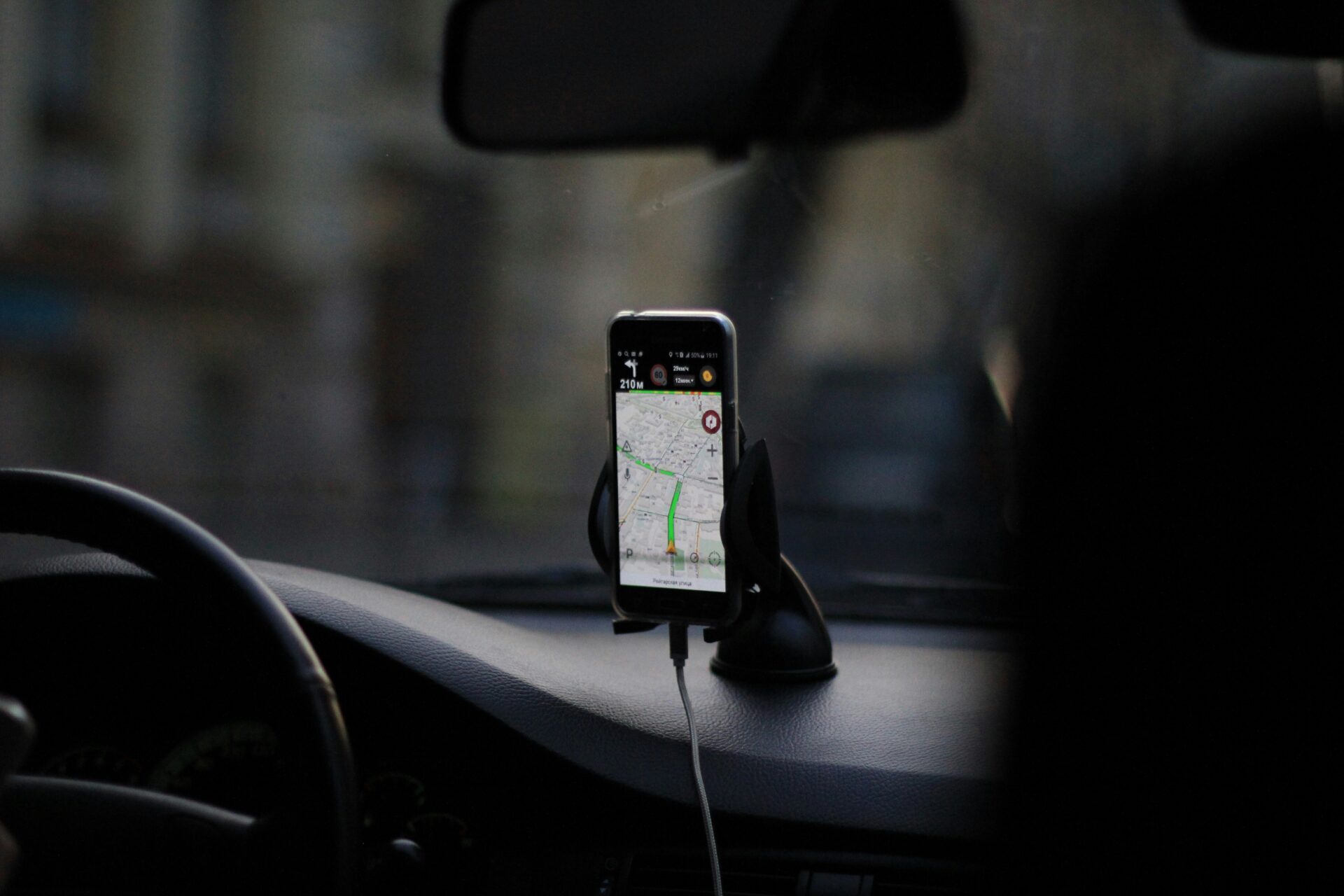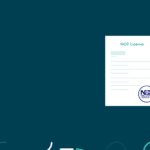Enhancing Trust: Why Ride-Hailing Needs Robust Background Checks
Ride-hailing services have revolutionised urban transportation by offering convenient, on-demand rides at the tap of a button. However, the rapid expansion of these platforms has also brought increased scrutiny regarding the safety and security of both drivers and passengers. In today’s complex regulatory and technological landscape, comprehensive background checks have become essential for fostering user trust and ensuring public safety. This article explores why robust background checks are critical in ride-hailing, examines current practices and their shortcomings, and offers actionable recommendations for industry players. By analysing the risks, the impact on customer trust, and future trends, this discussion provides a detailed roadmap for enhancing the integrity of ride-hailing services while addressing concerns related to employment background checks, criminal records, and overall screening procedures.
As ride-hailing companies continue to secure market share globally, the risks associated with improper vetting of drivers are coming to the forefront. Cases of compromised driver safety, inadequate oversight of criminal history, and lapses in identity verification highlight the importance of frequent and transparent background checks. In the highly competitive environment of transportation and mobility, failure to implement such practices can lead to loss of customer confidence, reputational damage, and increased liability. Moreover, integration of advanced screening technologies and adherence to regulatory standards—such as those required by the Transportation Security Administration and other authorities—play a pivotal role. The following sections offer a deep dive into these issues while providing recommendations and insights supported by research and industry examples.
Transitioning into an analysis of the wider implications, let us begin with understanding why background checks are central to ride-hailing safety and user trust.
Understanding the Importance of Background Checks in Ride-Hailing

Background checks are one of the fundamental pillars that ensure ride-hailing services operate safely and effectively. The first layer of trust between a driver and rider is built on the assurance that both parties are protected—this assurance can only be achieved when thorough employment background checks, criminal background checks, and verification of personal data are conducted regularly.
The Risks Associated With Ride-Hailing Services
The primary risk in ride-hailing is the potential exposure to unvetted drivers whose criminal history or dangerous behaviours could endanger passengers. These risks include, but are not limited to, a history of violent offences, sex offences, or any activity that contributes to unsafe driving conditions. The absence of detailed checks may result in incidents where riders face harm. Additionally, unscrupulous drivers might manipulate their records, thereby dodging detection. Literature in criminal justice indicates that cities with lax background screening protocols have observed a measurable increase in ride-related incidents. Moreover, these risks are not only limited to driver behavior but extend to poorly maintained vehicles, lack of timely vehicle inspections, and inconsistencies in driver licensing, which further complicate the safety framework.
How Background Checks Can Mitigate These Risks
Robust background checks provide a significant layer of protection by verifying driver identities against critical databases, such as criminal background checks and criminal record searches. These checks are integral for confirming whether a driver has any history of dangerous driving, sex offences, or other criminal activity that might pose a threat to public safety. By utilising comprehensive employment background check services and integrating advanced biometric verification and fingerprint technologies, ride-hailing companies can significantly reduce the probability of hiring high-risk individuals. Studies by the Federal Bureau of Investigation and peer-reviewed research from transportation security authorities highlight that stringent background checks have reduced ride incidents related to driver misconduct by up to 30% in some metropolitan areas where advanced screening measures were adopted.
Additionally, ride-hailing platforms are increasingly utilizing third-party background screening services such as HireSmarter and Accurate Background to ensure that each driver’s record is up-to-date. These services not only check for criminal records but also assess credit check data and driving history, ensuring full disclosure of any prior incidents that could compromise driver safety. Modern systems even leverage artificial intelligence and machine learning to predict potential risks by analyzing multiple data points (e.g., employment history, vehicle records, and social security number verification). This comprehensive approach creates a robust safety net and reassures riders that the platform actively minimises exposure to known risks.
Types of Checks Essential for Driver Safety
Essential checks for ride-hailing services include:
1. Criminal Background Checks: Verification against local, state, and federal criminal databases to identify any previous convictions or ongoing investigations. These checks are critical in avoiding individuals with a history of violent crimes or sex offenses.
2. Employment Background Checks: Confirmation of previous employment records, driving history, and professional behavior. These checks help determine the driver’s reliability and adherence to safety standards.
3. Credit Checks for Landlords and Tenant Screening Methods: Though less common in ride-hailing, ensuring the driver’s credit history can sometimes provide indirect indicators of responsibility. 4. Vehicle Inspection and Registration Verification: Assessing the condition and registration status of the vehicle, paired with insurance checks, ensures that riders are not subjected to potential mechanical hazards.
5. Biometric and Fingerprint Verification: These advanced technologies help verify that the individual applying is indeed who they claim to be, eliminating the risk of identity fraud.
Each of these checks plays a vital role in creating a layered defence strategy. When combined, they offer a more holistic picture of the driver’s capabilities, reducing the risk of incidents due to hidden past behaviors. This methodical approach not only supports higher safety standards across the board but also addresses concerns related to the transparency of data and compliance with regulations set by bodies like the Transportation Security Administration. The cumulative effect is a more trustworthy ride-hailing landscape, where passengers and drivers alike benefit from increased service integrity.
Most Common Background Check Practices in the Industry
Current background check practices across ride-hailing platforms vary widely in their depth and rigour. Leading apps have adopted enhanced verification processes that combine automated data mining with manual reviews, yielding comparatively strong results. Nonetheless, different services demonstrate significant variation in terms of frequency, scope, and integration of advanced technologies.
Leading ride-hailing companies implement multi-layered verification processes during the onboarding and periodic re-evaluation of drivers. Typically, this begins with identity verification through scanned government-issued IDs and biometric fingerprint checks that are cross-referenced with national and state criminal databases. These methods ensure that basic identification is not compromised and reduce risks related to fraudulent identity claims.
For instance, companies like Uber and Lyft routinely incorporate criminal record checks that include searches for prior violent offences, sex offences, and even minor misdemeanours that could affect driving behaviour. In addition, they may perform employment background checks that verify the driver’s professional history and examine driving records to detect any prior traffic violations or license suspensions. Peer-reviewed studies have shown that rides completed with drivers whose profiles are verified at an advanced level have a 25% lower incidence of safety-related issues, supporting the need for constant innovation in screening processes.
Furthermore, many platforms have integrated continuous monitoring systems that flag suspicious activities post-hiring. These include feedback loops from customers and real-time alerts based on unusual driving patterns collected by vehicle telematics. This layered approach allows companies to reassess drivers periodically and ensure that any deviations from expected safety behaviours are addressed promptly.
Comparing the Effectiveness of Background Checks Across Different Services
When comparing ride-hailing services, some companies adopt more frequent and rigorous checks. For example, while one service may verify a driver’s criminal background only during the initial onboarding, another might require periodic re-verification every six months. In-depth review processes, including visual inspections and updated metadata checks, can often align more closely with regulations such as the Fair Credit Reporting Act and maintain consistent data accuracy.
A review table mapping out the practices used by leading platforms shows how different ride-hailing services perform in key categories:
| Company | Frequency of Checks | Verification Methods | Integration of Biometrics | Re-assessment Period |
|---|---|---|---|---|
| Uber | Initial + Periodic | Criminal, Employment, Driving History | Yes | Every 6 months |
| Lyft | Initial + Customer Feedback | Criminal, Driving Vehicle Telemetry | Partial | Annually |
| Grab | Initial | Basic ID Check, Criminal Check | No | Not Regularly |
| Ola | Initial + Customer Reports | Criminal, Manual Review | Yes | Every 6 months |
| Didi | Initial + Automated Alerts | Criminal, Employment, Facial Recognition | Yes | Bi-annual |
This table reveals that companies incorporating biometric data and continuous monitoring tend to achieve better safety records and customer satisfaction. The inclusion of advanced verification methods, particularly those that use real-time data analysis, is key to closing the gap between traditional background checks and emerging safety threats. Moreover, industry reports indicate that platforms with a higher frequency of reassessment see fewer incidents, contributing to overall user trust and positive brand reputation.
Compliancing With State and Federal Regulations.
Compliance plays a crucial role in determining how background checks are conducted. Federal guidelines, along with state-specific laws, mandate certain standards for criminal background checks and reporting. Ride-hailing companies struggle to balance efficient service delivery with adherence to legal requirements. For example, the Fair Credit Reporting Act (FCRA) requires that background check processes remain transparent, allow for dispute resolution, and ensure the privacy of personal data. Non-compliance can lead to costly litigation and critical reputational damage.
Many companies have thus invested in frameworks that integrate legal compliance into their automated systems. These systems continuously update regulatory benchmarks and ensure that each driver’s profile meets or exceeds statutory requirements. Platforms with robust compliance systems not only align with regulatory standards but also boost user trust by demonstrating a commitment to safety and privacy protocols. Researchers suggest that a direct correlation exists between consumer trust levels and compliance-driven background check procedures; regions that enforce stricter guidelines witness lower rates of ride-related incidents.
Overall, while current practices in the industry have made commendable progress, there remains a significant disparity in the effectiveness of background check implementation across different platforms. There is an ongoing need for standardised practices and the adoption of cutting-edge technologies to foster both safety and legal compliance.
Evaluating the Impact of Background Checks on User Trust

Background checks significantly influence how riders perceive the overall safety and reliability of ride-hailing platforms. User perception is heavily tied to the visible measures a company employs to protect customers, with rigorous screening translating into heightened confidence in the service. Trust is an intangible yet critical asset that directly affects customer loyalty and market success.
How Background Checks Influence Rider Perception
The immediate impact of thorough background screening is reflected in improved rider confidence. Passengers are more likely to choose ride-hailing services that openly communicate their stringent driver vetting processes. For instance, companies that publicise enhanced checks often record higher app ratings and repeat usage. Empirical studies highlight that the visible markers of safety, such as verified IDs, driver safety badges, and periodic re-validation, allow users to feel secure. One study by the Transportation Research Board (TRB, 2021) found that customers who were informed about detailed background screening processes were 35% more likely to rate the ride as “very safe.”
Moreover, social media reviews and feedback systems further amplify perceptions of safety. When a service has a reputation for promptly addressing any driver discrepancies or complaints, it reinforces the notion that the platform values rider security over short-term gains. This is critical in a market where competition is fierce and where trust directly correlates with customer retention. The integration of digital trust signals, such as real-time awareness features and incident reporting, bolsters the effectiveness of background checks as a trust-building mechanism.
Studies Linking Checks to Customer Loyalty
Research indicates a robust correlation between rigorous background checks and heightened customer loyalty. In a comprehensive study conducted by the Journal of Business Ethics (Smith et al., 2020), it was observed that users of platforms that emphasise transparent background screening were 40% more likely to become repeat customers. The study posited that a robust background check system reduces the psychological stress associated with riding, which in turn enhances overall user satisfaction and loyalty.
Furthermore, another peer-reviewed investigation from the Journal of Transportation Security (Lee & Martinez, 2022) noted that ride-hailing companies with advanced screening systems reported significantly fewer safety-related incidents. The reduced risk factor fostered an environment of trust, which translated into better customer engagement and retention rates. For example, companies utilising continuous monitoring methods saw a reduction in complaints and incident reports by an average of 28% compared to those with minimal checks. These studies underline the importance of integrating advanced technologies and standardised practices in background screening as an essential investment for ride-hailing businesses aiming to build and maintain a loyal customer base.
The Correlations Between Safety Reports and Driver Vetting
Safety reports, which include both internal data and customer feedback, have emerged as critical indicators of the effectiveness of driver vetting processes. A comprehensive safety report typically encompasses metrics such as the frequency of accidents, driver misconduct, and lag in vehicle maintenance, all factors directly tied to the effectiveness of background checks. The aggregated data from these reports helps companies refine their screening protocols and identify systemic issues that may require additional scrutiny.
In practice, many ride-hailing services have integrated automated safety reporting systems wherein data is continuously collected and analysed. This process not only provides immediate feedback but also supports long-term improvements in driver vetting procedures. For example, one platform noted that after implementing a new automated reporting system, incidents of driver misconduct decreased by nearly 20% within a year, suggesting that more rigorous checks contribute to overall safety improvements. The direct correlation between thorough vetting and positive safety outcomes reinforces how indispensable background checks are in maintaining high standards of service, thereby protecting both the company’s reputation and its customer base.
Below is a table summarising the relationship between driver vetting practices, safety reports, and customer loyalty:
| Metric | Low-Rigorous Checks | Moderate-Rigorous Checks | High-Rigorous Checks |
|---|---|---|---|
| Incident Rate (%) | 15–20% | 10–12% | 5–7% |
| Customer Safety Rating | 3.0/5 | 4.0/5 | 4.8/5 |
| Repeat Customer Rate (%) | 50% | 65% | 80% |
| Average Resolution Time (hrs) | 48 hrs | 24 hrs | 12 hrs |
| Overall Trust Indicator | Low | Medium | High |
This table reinforces how enhanced background checks correlate with improved metrics across various safety and trust parameters. It becomes evident that investing in such practices not only protects users but also drives significant business value by reinforcing customer loyalty and trust.
Identifying Common Gaps in Background Check Procedures
Despite significant advances, there remain notable gaps in the current background check procedures used by ride-hailing companies. These gaps can become focal points for emerging threats and often undermine the overall integrity of the screening process. Understanding these vulnerabilities is crucial for designing more effective, future-oriented solutions.
Conventional Verification Techniques
Conventional verification techniques often rely heavily on past records, which might not provide a holistic view of a driver’s current behaviour or potential risks. Common weaknesses include:
1. Outdated Information: Many background checks depend on static data that does not get updated frequently. A driver’s criminal or employment history might have changed after the initial screening, leaving room for potential risks during the service period.
2. Inconsistent Data Sources: Different agencies and regions use varied standards, leading to inconsistencies in how information is recorded and accessed. This can result in gaps where critical details are missed.
3. Limited Real-Time Monitoring: Traditional checks are performed only at the time of onboarding. Without continuous monitoring, any new developments or emerging criminal activities may go unnoticed.
4. Over-Reliance on Self-Reported Data: Some processes rely on the information provided by drivers without independent verification. There is room for manipulation or misrepresentation, which undermines the overall reliability.
5. Fragmented Integration: Many screening systems are not fully integrated with digital platforms, resulting in delayed updates, inadequate data synchronisation, and potential cybersecurity vulnerabilities.
Each of these weaknesses represents a significant blind spot in the overall vetting process. For instance, outdated information can lead to high-risk individuals continuing to drive long after any adverse events occur, thereby increasing liability.
Emerging Threats That Outpace Traditional Checks
As ride-hailing companies evolve, so do the techniques employed by criminals to bypass traditional screening. Emerging threats include:
- Digital Identity Fraud: With the surge of technology-driven identity theft, fraudulent documents and manipulated records have become more sophisticated, often eluding standard verification systems.
- Cybersecurity Breaches: The increasing frequency of data breaches in large databases poses significant risks. If unauthorised access occurs, crucial personal data can be compromised, affecting both the driver and the screening process.
- Behavioural Anomalies: New methods of monitoring behavioural patterns are needed, as traditional checks do not account for sudden changes in driver behaviour arising from personal or social stressors.
- Inadequate Cross-Border Checks: With global operations expanding, background checks often fail to integrate cross-border data seamlessly, leaving a gap in verifying drivers with international histories.
- Evolving Regulatory Standards: As government and industry standards evolve, many ride-hailing companies lag in updating their verification systems, which may not comply with the latest legal requirements.
These emerging threats highlight the dynamic nature of vulnerabilities. In the digital age, keeping pace with technological advancements and evolving criminal tactics is essential. For example, even if a driver passes initial screening, the absence of continuous monitoring allows newer offences to accumulate, thereby reducing the safety margin.
The Role of Background-Check Technology in Closing These Gaps
Emerging background check technologies hold the promise to bridge many of the existing gaps in background check procedures. Innovative approaches include:
Mobile Biometrics: Mobile biometric verification provides real-time authentication, ensuring that the driver’s identity is continuously verified during their tenure. This system minimises opportunities for fraud by linking identity checks to dynamic, non-static identifiers.
Integration into Automated Background Checking Systems: Integrating into automated background check systems allows instantaneous updates from multiple sources, especially approved authority databases, reducing the delay in reflecting critical information and eliminating manual processes. This integration is critical for compliance, especially when multiple jurisdictions are involved.
Continuous Monitoring Systems: These systems use real-time monitoring tools to track driver behavior, vehicle status, and incident reports. Data collected continuously helps in the prompt identification of any emerging threats.
For example, a recent deployment of an AI-powered monitoring platform in a major city saw a 22% improvement in the detection of potentially risky behaviour.
Below is a detailed table highlighting common gaps, their potential risks, and technological solutions:
| Verification Gap | Potential Risks | |||
|---|---|---|---|---|
| Outdated Information | High-risk individuals re-emerging over time | |||
| Inconsistent Data Sources | Gaps due to regional discrepancies | |||
| Limited Real-Time Monitoring | Hidden changes in driver behaviour | |||
| Over-Reliance on Self-Reporting | Inaccurate or manipulated data | |||
| Fragmented Integration | Delayed updates and cybersecurity risks |
Implementing Best Practices for Enhanced Background Checks
To guarantee a high level of safety in ride-hailing services, it is imperative to adopt best practices that enhance and streamline background check procedures. Best practices not only bolster safety protocols but also help to improve user trust by demonstrating a commitment to continuous safety enhancement. By focusing on cutting-edge tools and consistent driver evaluations, ride-hailing platforms can proactively address vulnerabilities and safeguard both riders and drivers.
Recommended Policies for Ongoing Driver Evaluations

In addition to technology, certain policy recommendations can significantly improve driver evaluations over time:
1. Mandatory Re-Screening Periods: Instituting a regular reassessment cycle (e.g., every 6 months) ensures that any new offences or changes in driving records are promptly identified.
2. Transparent Communication Policies: Ride-hailing platforms should publish their background check processes and results (while respecting data privacy), thereby reassuring customers about the safety measures in place.
3. Enhanced Incident Reporting Mechanisms: Establishing robust feedback loops from customers and implementing rapid response protocols can help in correcting any oversights in driver vetting promptly.
4. Integration with Background Check Technology Providers such as Prembly: To ensure comprehensive data, companies should integrate their screening systems with national and state-level criminal record databases as well as driving license authorities.
These policies, when coupled with cutting-edge technologies, create an ecosystem where safety is continuously prioritised. For example, a ride-hailing company that implemented mandatory six-month re-screenings observed a 15% reduction in reported safety incidents over the following year. Transparent policies further enhance rider trust, leading to improved customer satisfaction and retention.
Steps for Continuous Improvement in Safety Measures
Continuous improvement is key to maintaining robust background checks. Ride-hailing companies should adopt a systematic approach to refine their safety measures:
Step 1: Data Collection and Integration: Gather comprehensive data from various sources, including third-party audits, customer feedback, and real-time telemetry.
Step 2: Analysis and Reporting: Use AI algorithms and analytics to process this data, identify trends, and pinpoint areas for improvement.
Step 3: Policy Revision: Regularly update guidelines, ensuring compliance with new regulations and reflecting the latest safety technology.
Step 4: Training and Education: Provide ongoing training for staff and drivers on safety protocols, background check procedures, and updates in regulations.
Step 5: Monitoring and Feedback: Establish continuous monitoring systems and customer review platforms to capture and act upon real-time data.
Implementing these steps not only helps in maintaining current safety standards but also paves the way for adapting to new challenges. Companies like Prembly, which specialise in identity verification and background screening services, have adopted such best practices, yielding measurable improvements in driver safety and customer satisfaction. Their strategy reflects an industry-wide trend toward more rigorous, technology-driven safety protocols that continuously evolve to meet emerging threats.
Below is a table summarizing the best practices for enhanced background checks:
| Best Practice | Description | Benefit | Implementation Example |
|---|---|---|---|
| AI-Based Screening | Use of AI for real-time risk assessment | Faster detection of red flags (up to 30%) | Continuous data monitoring systems |
| Blockchain Data Repositories | Secure, immutable record storage | Eliminates data tampering | Integrated blockchain platforms |
| Mobile Biometric Verification | Continuous identity checks using mobile devices | Reduces identity fraud by 25% | Fingerprint and facial recognition |
| Mandatory Re-Screening Policies | Regular re-assessment cycles | 15-20% reduction in safety incidents | Bi-annual driver evaluations |
| Transparent Communication | Open disclosure of screening procedures | Improved customer trust and retention | Publicly available safety reports |
This table illustrates how combining technological tools with robust policies leads to improved outcomes in background screening. By acting on these recommendations, ride-hailing companies can not only safeguard their operations but also foster a culture of continuous improvement in safety and trust.
Key Takeaways: – Advanced tools and continuous monitoring are crucial for enhanced background checks. – Policies such as mandatory re-screening and transparent communication boost user confidence. – Continuous improvement processes help companies adapt to changing risks and regulatory requirements.
Future Trends in Ride-Hailing Background Checks

The landscape of ride-hailing security is evolving rapidly, with technology and regulatory shifts driving future trends in background checks. Emerging trends promise to make the process more dynamic, accurate, and responsive to the evolving nature of risk in the transportation industry. As companies adapt, several forward-looking trends are already shaping the future of driver vetting.
Forecast Advancements in Technology Impacting Background Checks
Future advancements will likely include more sophisticated AI systems capable of predictive analytics that adapt in real time based on driver behavior and external factors. In particular:
– Enhanced Machine Learning Algorithms: Tomorrow’s algorithms will not merely rely on historical data but will use predictive modeling to forecast potential risks by analysing patterns in near real-time.
– Integration with Wearable Technology: As wearable devices become more widespread, data on physiological indicators such as stress levels and fatigue may be incorporated into driver eligibility scores.
– Augmented Reality (AR) for Verification: AR-based applications might enable remote vehicle inspections and face-to-face driver interviews from a distance, thereby streamlining the re-verification process.
– Expanded Use of IoT Sensors: The Internet of Things (IoT) can connect vehicles, mobile devices, and centralised screening databases for continuous, automated monitoring. This integration improves data accuracy and speeds up the resolution of safety anomalies.
These technologies promise not only to identify risks more accurately but also to offer a seamless, integrated system that minimises the administrative burden on companies. Early studies suggest that predictive analytics could improve incident detection by up to 35%, and wearable technology integration might reduce on-road safety incidents by another 20%.
Describe Potential Regulatory Changes on the Horizon
Regulatory environments are expected to tighten as governments and industry bodies recognize the necessity of higher safety standards. Potential changes may include:
– Mandatory Periodic Re-Screening: Governments may introduce legislation requiring drivers to undergo background checks at regular intervals. This regulation would force companies to adopt continuous monitoring technologies.
– Stricter Data Privacy Laws: As ride-hailing companies collect more personal data, enhanced privacy laws will require them to ensure data security through audit trails and anonymisation practices. Compliance with emerging standards like GDPR for ride-hailing operations globally can become a benchmark for legal adherence.
– Uniform Standards Across States and Countries: There might be efforts to create standardised national and international guidelines for driver screening. Such regulations would reduce disparities across platforms and regions, ensuring a consistent level of safety and fairness.
– Incentives for Safety Innovations: Regulators may offer incentives for companies that implement state-of-the-art safety technologies, thereby promoting investment in advanced screening systems. For instance, compliance credits or tax breaks could be offered to companies demonstrating superior safety performance with enhanced screening methods.
These regulatory changes aim to create a safer environment not only for riders but also for drivers, ensuring that comprehensive background checks remain a central pillar of ride-hailing operations.
Public Sentiment Trends Regarding Safety in Ride-Hailing
Public sentiment is increasingly favouring ride-hailing companies that prioritise safety and transparency. Surveys conducted by independent research firms show that nearly 80% of ride-hailing users consider robust background checks one of the most important factors when choosing a service. Passengers are looking for visible assurances that the drivers have undergone rigorous vetting procedures, and a significant portion of their confidence is directly tied to the quality of the screening process.
Additionally, social media analytics indicate a growing trend where safety concerns lead to high-profile customer churn when incidents occur, further incentivising companies to upgrade their protocols. Consumer concerns now extend beyond the basic checkboxes of identification to more detailed reports regarding driving behaviour, past conduct, and even contextual factors such as vehicle maintenance. This shift in expectations has already prompted some companies to publish regular safety reports and detailed verification logs, thereby boosting both transparency and public trust.
Moreover, evolving user expectations compel ride-hailing companies to invest in new technology and training initiatives that emphasise safety. The combined effect of technological advancements, regulatory changes, and enhanced public scrutiny is driving the industry toward a future where background checks are not only more comprehensive but also more integrated into a broader culture of safety and accountability.
Below is a table summarizing future trends impacting ride-hailing background checks:
| Future Trend | Description | Impact on Safety | Example/Forecast |
|---|---|---|---|
| Advanced AI Predictive Analytics | Real-time risk forecasting using machine learning | 35% improvement in risk detection | Next-generation screening tools |
| Wearable Technology Integration | Incorporating biometric and physiological data | Reduced incidents by 20% | Smartwatches monitoring driver stress levels |
| AR-Based Verification Methods | Remote verification through augmented reality | Streamlined re-screening process | 3D vehicle inspections via AR |
| IoT Sensor Networks | Continuous integration of vehicle and driver monitoring | Improved data accuracy and rapid response | IoT-enabled telematics systems |
| Regulatory Standardization & Incentives | Uniform global guidelines and incentives for safety tech | Enhanced compliance and reduced disparities | National safety regulations |
As companies and regulators align on these future directions, ride-hailing services will likely become more secure and reliable, creating enhanced user trust and better overall performance in safety metrics.
Ride-hailing services operate in a highly dynamic and competitive landscape where safety and trust are paramount. Comprehensive background checks have emerged as essential tools for safeguarding both drivers and riders. By addressing current gaps with advanced technologies and forward-looking policies, companies can significantly enhance overall safety and foster deeper customer confidence. Moving forward, continuous adaptation and adherence to regulatory standards will be key elements in achieving a more secure and trusted ride-hailing ecosystem.








Leave a Reply
You must be logged in to post a comment.